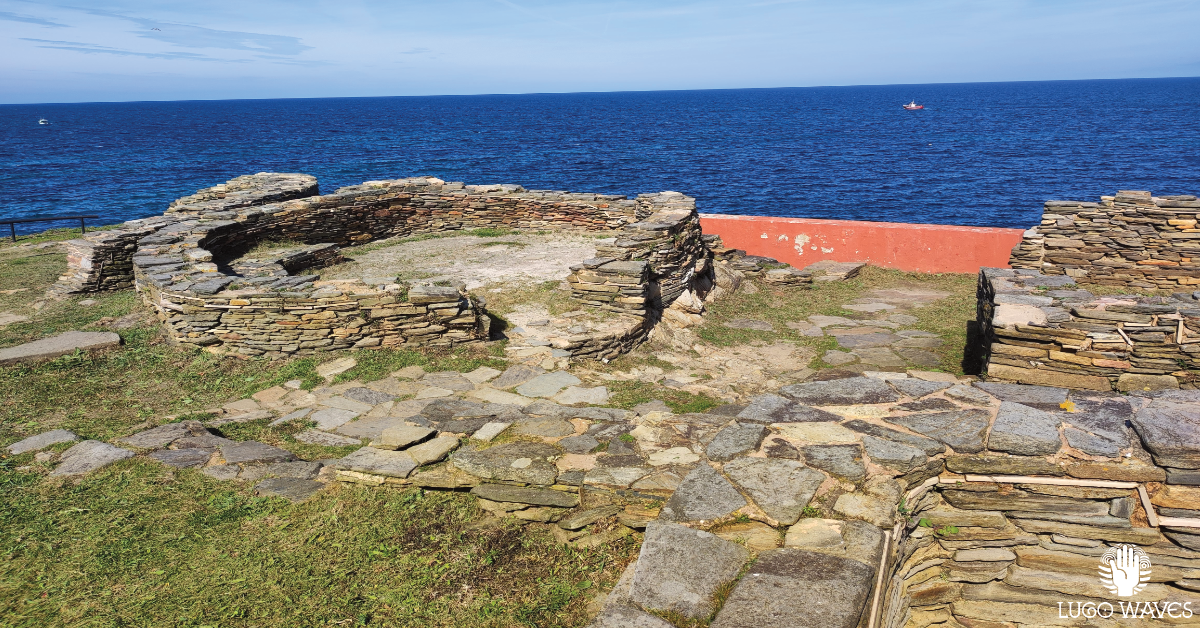If you are looking for a unique and fascinating place to visit near Foz or within easy reach of Ribadeo or Viveiro, you should definitely check out Castro de Fazouro. This is an ancient settlement that dates back over two thousand years, when the local culture mixed with the Roman influence. It is located on a small peninsula next to the beautiful Arealonga beach, offering stunning views of the Cantabrian Sea.
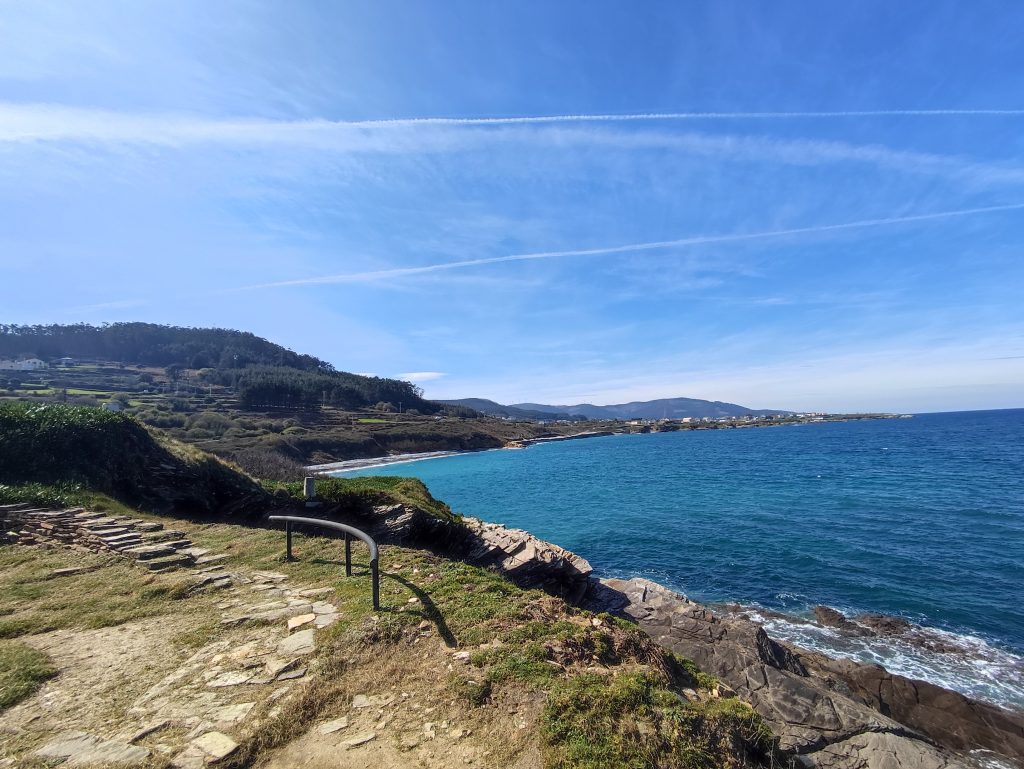
You can explore the remains of the stone houses, some of them with rectangular shapes and others with oval ones. You can also see the defensive walls, the ditch carved in rock and some interesting features like fireplaces, benches and the places which hint at stairs inside the buildings.
Castro de Fazouro is one of the most excavated and preserved coastal castros in Galicia and it is open to visitors as a museum. There are signs (in Galician and Spanish) explaining how people lived there, what they ate, what they traded and how they adapted to their environment. Castro de Fazouro is a place that will transport you to another time and make you appreciate the rich heritage of this region.
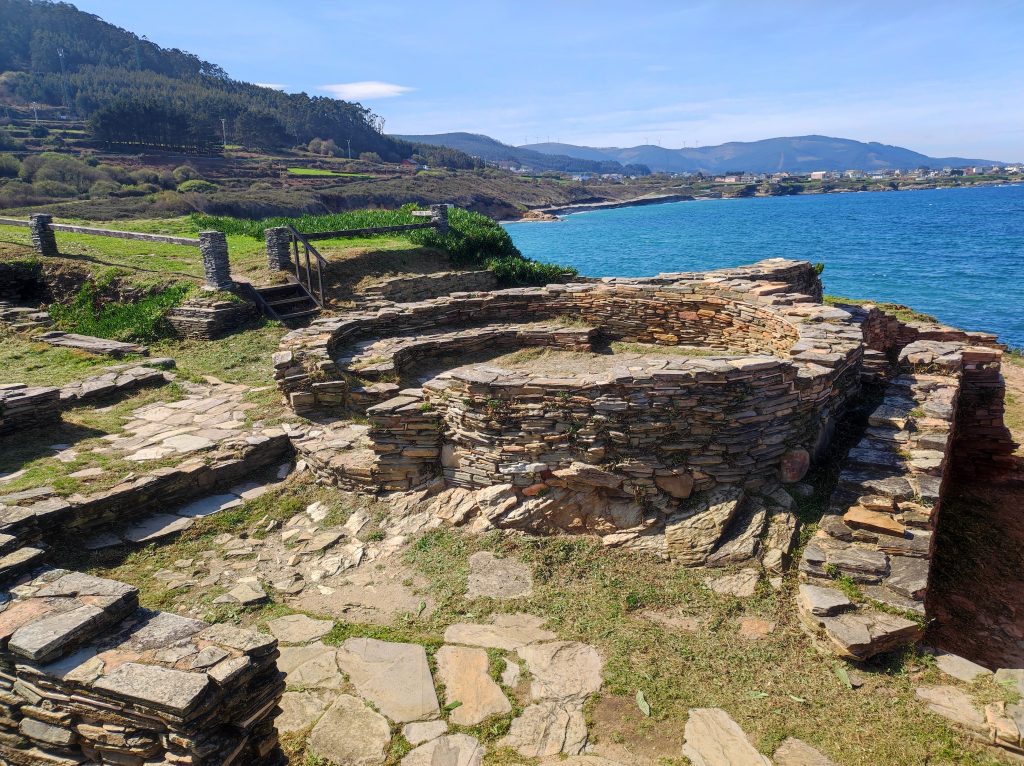
Visiting The Castro de Fazouro
The remains of the castro can be accessed along side the arealonga beach. The site is completely open and visitors can walk among the ruins. This gives us the opportunity to really step inside the footsteps of this ancient culture and try to understand a little about what life would have been like.
While the remains of the walls are all that is left, explorations into the fort over the years has given an insight into the structure of the fort and the way people lived.
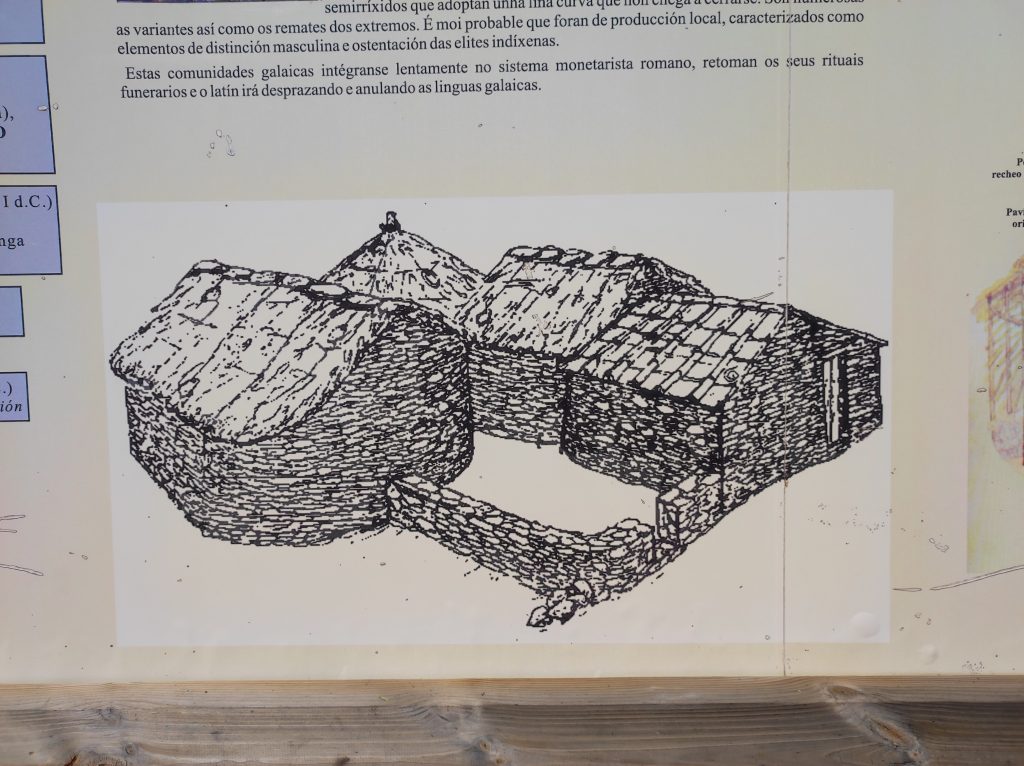
Castro de Fazouro was a fortified settlement is situated on a hill and was inhabited from the 2nd century BC to the 1st century AD. The Castro de Fazouro is famous for its impressive system of defense, including a wall made of large stone blocks and several watchtowers. The settlement also had a complex layout, with several square and circular stone structures arranged in a radial pattern, which were likely used as houses, workshops, and storage rooms. The Castro de Fazouro is a testament to the engineering and architectural skills of the Castro people, as well as their ability to adapt to their environment and defend themselves from external threats.
What is a Castro?
When visiting, it’s definately worth knowing a little more about Castros and the Castro culture which is unique to this area.
The Castro culture of Galicia is a pre-Roman civilization that flourished in the northwestern region of the Iberian Peninsula from the 3rd century BC to the 1st century AD. The name “Castro” comes from the Galician word for fortified settlements, which were the hallmark of this culture. These settlements, built on hills and mountains, were surrounded by walls made of stone and earth, and served as the homes of the Celtic tribes that inhabited the region.
The Castros were not just simple defensive structures; they were also centers of trade and culture. Archaeological findings show that the Castro people were skilled in metalworking, pottery, and textiles, and they traded extensively with other Celtic tribes in Europe. They also had a complex social structure, with the chieftains and warriors at the top and the artisans and farmers at the bottom.
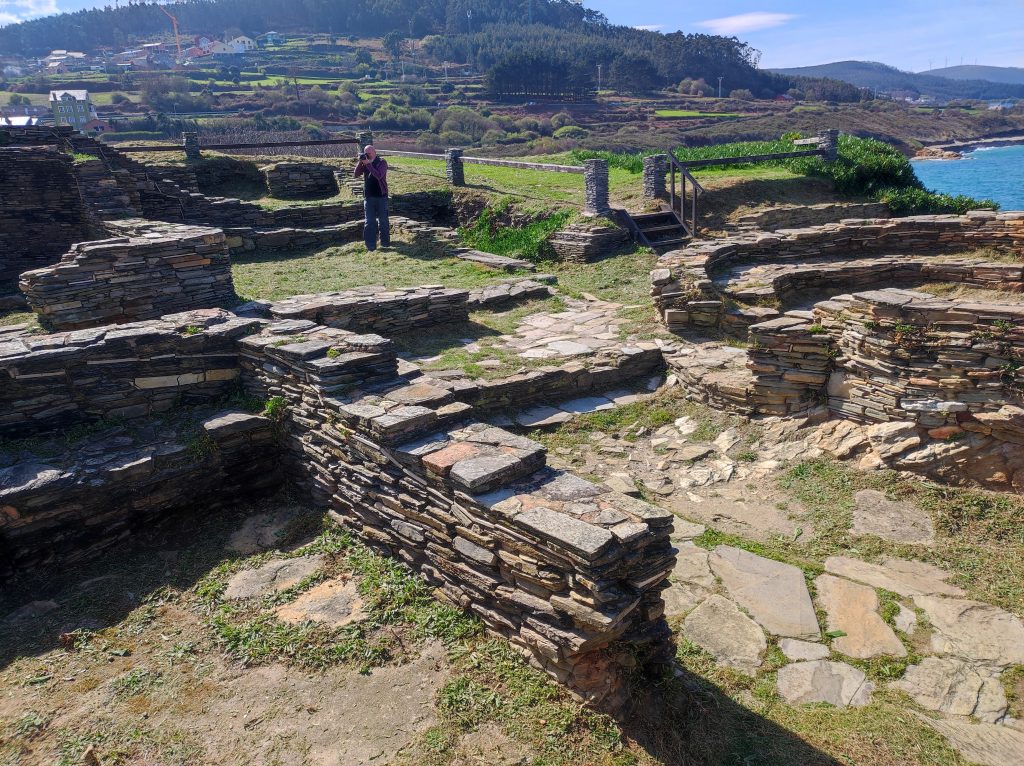
The Castro culture came to an end in the 1st century AD, with the arrival of the Romans. The Romans gradually conquered the region and assimilated the Castro people into their own culture. However, the legacy of the Castro culture can still be seen in the Galician language, music, and folklore.
The Castro culture of Galicia was a fascinating civilization that left an indelible mark on the region’s history and culture. The Castros, with their impressive fortifications, complex social structure, and skilled artisans, were a testament to the ingenuity and creativity of the Celtic people. Today, the Castros are a reminder of the rich and diverse heritage of Galicia, and a source of inspiration for those who seek to understand the past and shape the future.
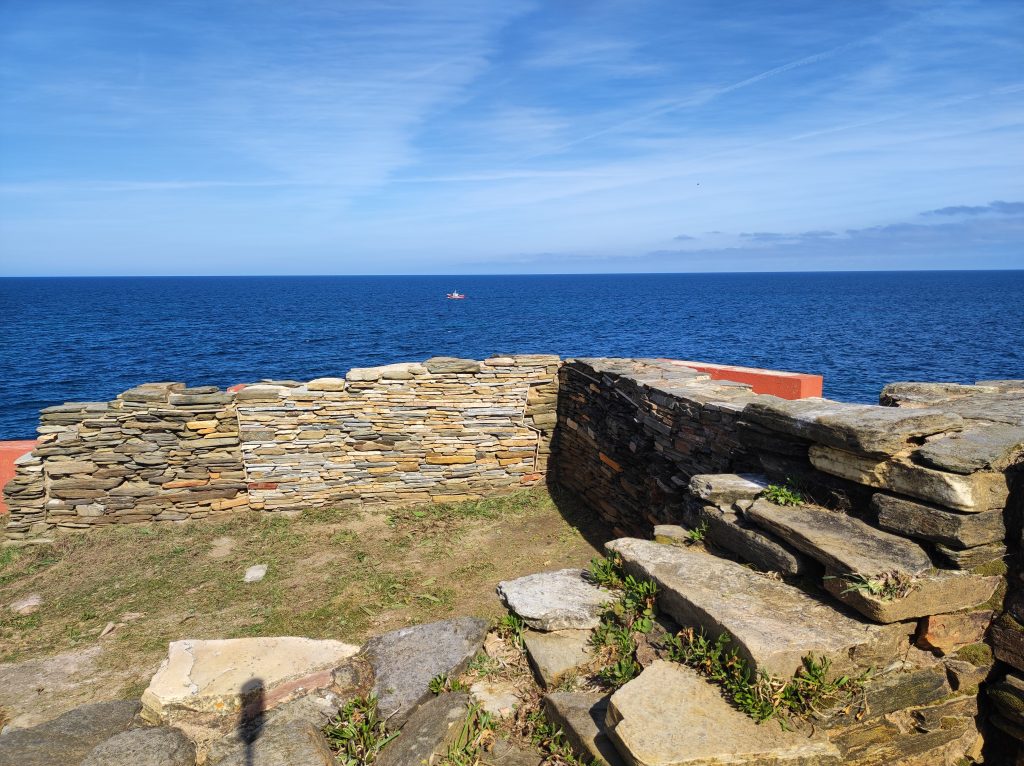
How to Get To Castro de Fazouro

If you want to visit the Castro de Fazouro, a stunning archaeological site near Foz, you have two options: public transport or car. Both are easy and convenient ways to enjoy this amazing place.
Public Transport
If you choose public transport, you can take a bus from Lugo or Ribadeo to Foz. The bus station is located in the center of the town, and from there you can walk for about 20 minutes along the coast until you reach the Castro de Fazouro. You will see signs pointing to the site along the way. The walk is very scenic and pleasant, and you will pass by some beautiful beaches and cliffs. Alternatively you can take the FEVE train and the train station is just meters from the castro.
By Car
If you prefer to travel by car, you can drive from Lugo or Ribadeo on the A-8 motorway and take exit 525 towards Foz. Then follow the signs to Foz Centro and then to Castro de Fazouro. You will find a parking lot near the site where you can leave your car for free. The drive takes about an hour from Lugo and half an hour from Ribadeo.
By Foot
The castro can be reached from the coastal path from Foz. It’s about 6km along the coastal path, however the view is stunning and you pass some delightful beaches.

The Castro de Fazouro is open all day every day admission is free.
Sights to See Near Castro de Fazouro
The Castro de Fazouro is situated in the Foz municipality, which offers visitors an array of attractions and natural landscapes to explore beyond the ancient hill fort. Here are some sights and activities for you to also explore when you are visiting this area:
- Ría de Foz: The estuary of the Masma River, Ría de Foz is a haven for birdwatching and taking leisurely walks along the scenic coastline. The picturesque landscape provides a tranquil setting for relaxation and enjoying nature.
- Castelos Beach (Praia dos Castelos): This stunning beach is known for its unique rock formations called “Os Castelos,” which are a result of erosion by the Cantabrian Sea. The beach is an excellent spot for swimming, sunbathing, and taking in the breathtaking views.
- Pico da Frouxeira: This mountain peak offers panoramic views of the surrounding area, including the coastline and the Ría de Foz. Hiking to the summit is a rewarding experience for nature enthusiasts and adventure-seekers.
- Basilica of San Martiño de Mondoñedo: This historic basilica, located in the nearby town of Mondoñedo, is one of the oldest churches in Spain. The church features a blend of architectural styles, including Romanesque and Gothic elements, and houses a small museum with religious artifacts.
- Playa de Arealonga: Close to Castro de Fazouro, this beautiful beach is ideal for sunbathing, swimming, and enjoying a coastal stroll. The beach boasts fine white sand and crystal-clear waters.
- The town of Ribadeo: Located approximately 20 kilometers from Foz, the charming town of Ribadeo offers a range of attractions, including the Torre de los Moreno, the Santa Maria do Campo Church, and the Plaza de España.
- As Catedrais Beach (Playa de las Catedrales): One of the most famous beaches in Galicia, As Catedrais Beach is known for its spectacular natural arches and caves, sculpted by the sea. This stunning location is perfect for a day trip from Foz.
- The town of Viveiro: About 40 kilometers from Foz, Viveiro is a historic town with a rich cultural heritage. Key attractions include the Church of Santa María, the San Francisco Bridge, and the picturesque Old Town.
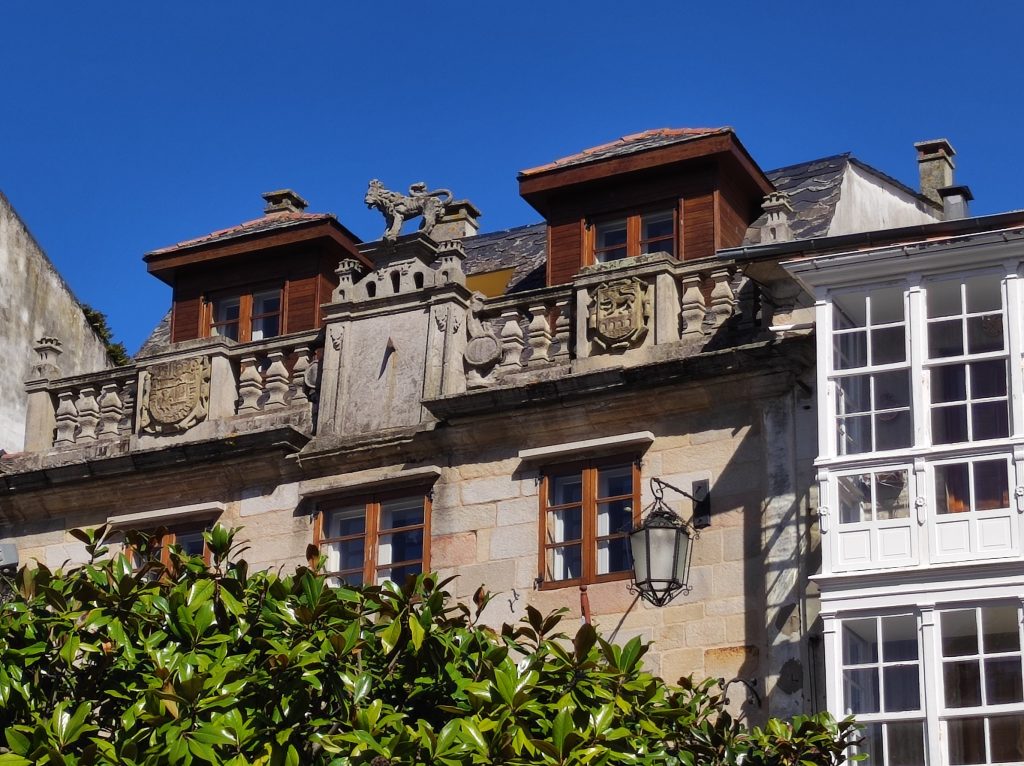
These are just a few of the many sights and activities to enjoy in and around the Foz area. The natural beauty, rich history, and coastal charm of the region make it a perfect destination for visitors seeking to explore the wonders of Galicia.

